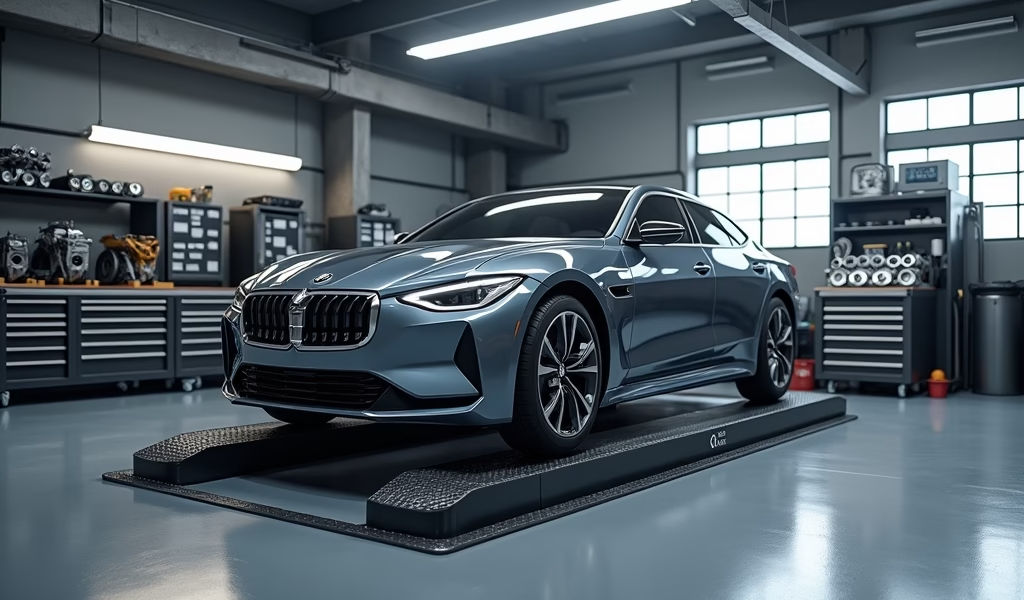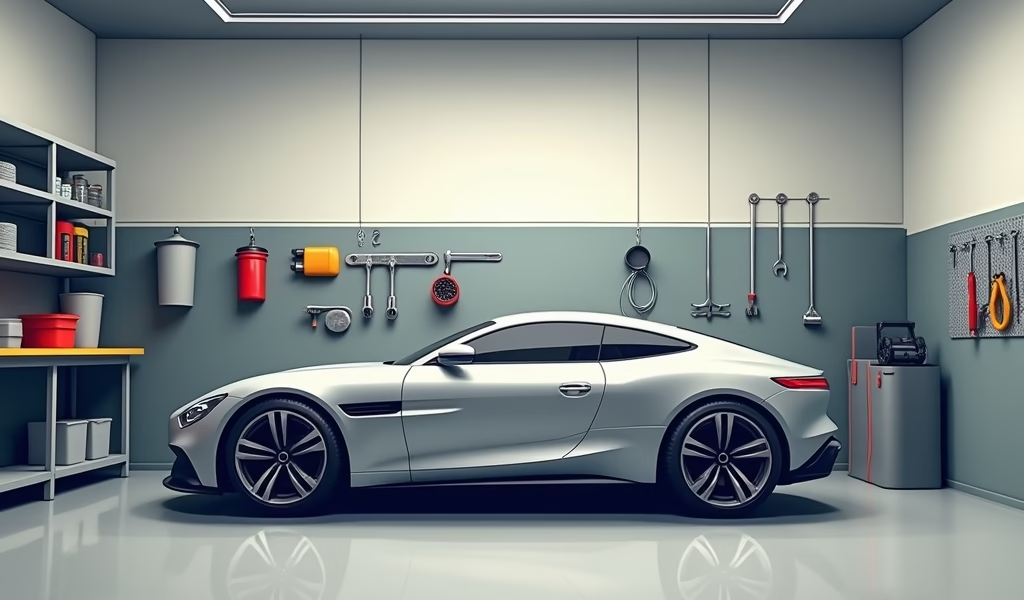Overview
This article outlines seven essential car maintenance practices including fluid checks, tire care, battery maintenance, filter replacements, brake system inspections, visibility components, and seasonal preparations that extend vehicle lifespan and prevent costly repairs. Regular attention to these maintenance areas can save car owners thousands of dollars while ensuring safety and optimal performance, with the article emphasizing that consistent care rather than expensive interventions is the key to vehicle longevity.
Table of Contents
- The Importance of Regular Car Maintenance
- Essential Fluids: The Lifeblood of Your Vehicle
- Tire Maintenance: Where the Rubber Meets the Road
- Battery Care: Keeping Your Car’s Heart Beating
- Filter Replacements: Let Your Car Breathe Easy
- Brake System: Safety First, Always
- Lights and Wipers: Seeing and Being Seen
- Seasonal Maintenance: Preparing for Weather Changes
- Conclusion: Your Road to Vehicle Longevity
- Frequently Asked Questions
The Importance of Regular Car Maintenance
When it comes to your vehicle, a consistent car maintenance checklist isn’t just a good idea—it’s essential. After 20 years under the hood, I can tell you that the difference between a car that lasts 100,000 miles and one that surpasses 250,000 miles often comes down to how well you maintain it.
Think of your car like your body. You wouldn’t skip regular checkups and expect to stay healthy, right? The same principle applies to your vehicle. Regular maintenance prevents small issues from becoming expensive repairs and keeps your car running safely and efficiently.
What many car owners don’t realize is that following basic maintenance tips can actually save them thousands in the long run. For every $1 spent on preventative maintenance, you could save $8-10 on future repairs. That’s a return on investment that’s hard to beat!
Let’s break down the seven proven maintenance tips that will keep your car purring like a kitten for years to come. I’ve organized these in order of priority, but remember—they’re all important components of a comprehensive car maintenance strategy.
Essential Fluids: The Lifeblood of Your Vehicle
Your car runs on more than just gasoline. There’s a whole cocktail of fluids keeping your vehicle’s systems operating smoothly. Neglecting these fluids is like ignoring your own hydration—eventually, something’s going to break down.
Let’s start with the most obvious: engine oil. This isn’t just lubricant; it’s your engine’s lifeblood. Modern engines typically need oil changes every 5,000-7,500 miles, but check your owner’s manual for the manufacturer’s recommendation. The old 3,000-mile rule is outdated for most vehicles, especially those using synthetic oil.
Here’s a comprehensive fluid checklist to follow:
- Engine oil: Check monthly, change according to your manual (typically 5,000-7,500 miles)
- Coolant/antifreeze: Check twice yearly, flush every 30,000 miles
- Brake fluid: Check during oil changes, replace every 2 years
- Transmission fluid: Check monthly, change every 30,000-60,000 miles
- Power steering fluid: Check monthly, top off as needed
- Windshield washer fluid: Check monthly, top off as needed
A quick pro tip from the garage: Your fluid’s color tells a story. Clean engine oil is amber; when it turns black, it’s time for a change. Transmission fluid should be bright red; if it’s brown, you’ve got issues brewing. Brake fluid should be clear to slightly amber; if it’s dark or cloudy, it needs replacing immediately.
According to the Car Care Council, regular fluid maintenance can extend your vehicle’s life by up to 50%. That’s significant when you’re investing thousands in transportation!

Tire Maintenance: Where the Rubber Meets the Road
Your tires are the only parts of your car that actually touch the road, making them crucial for safety. After seeing countless preventable accidents in my career, I can’t stress tire maintenance enough.
Proper tire pressure isn’t just a safety issue—it’s an efficiency one too. Underinflated tires can reduce your gas mileage by up to 3%. That might not sound like much, but it adds up quickly at today’s fuel prices. The correct tire pressure isn’t what’s listed on the tire itself (that’s the maximum); check your driver’s door jamb or owner’s manual for the correct PSI.
Rotation is equally important. Front and rear tires wear differently, and regular rotation ensures they wear evenly, extending their lifespan. Most mechanics recommend rotating your tires every 5,000-7,500 miles—conveniently, the same interval as many oil changes.
Here’s your tire maintenance checklist:
- Check tire pressure monthly and before long trips (don’t forget the spare!)
- Rotate tires every 5,000-7,500 miles
- Check tread depth quarterly (the penny test works: insert a penny with Lincoln’s head down—if you can see the top of his head, it’s time for new tires)
- Inspect for uneven wear, cuts, or bulges monthly
- Align wheels annually or if you notice pulling to one side
I’ve seen $800 sets of tires ruined in 10,000 miles due to neglect, while others get 50,000+ miles through proper care. The difference? Just a few minutes of attention each month. Your wallet (and safety) will thank you for it.
Battery Care: Keeping Your Car’s Heart Beating
Nothing ruins your day quite like turning the key and hearing…nothing. Battery failure rarely gives warning signs, but proper maintenance can prevent most unexpected failures.
Modern batteries require less maintenance than older models, but they still need attention. Most batteries last 3-5 years, but extreme temperatures can dramatically shorten their lifespan. Here in the shop, we see twice as many battery failures in January and July compared to more moderate months.
Start by keeping your battery clean. Corrosion on terminals looks like a white or greenish powder and can prevent proper electrical contact. A simple mix of baking soda and water, applied with an old toothbrush, works wonders for cleaning battery terminals.
Battery maintenance checklist:
- Visually inspect for corrosion monthly
- Clean terminals as needed (disconnect the negative terminal first, reconnect it last)
- Have the battery tested annually after it’s 2 years old
- Check that mounting brackets are tight and the battery doesn’t move
- Consider a trickle charger for vehicles driven infrequently
A quality battery costs $100-200, but a tow and emergency replacement can easily double that cost. Plus, battery failure often happens at the least convenient times—during travel, bad weather, or important events. Seasonal maintenance checks are especially important for battery health, as extreme temperatures put additional strain on your electrical system.
Remember: If your battery is more than 3 years old and you notice your engine cranking more slowly than usual, that’s your warning sign. Get it tested before you’re stranded.
Filter Replacements: Let Your Car Breathe Easy
Your vehicle has several crucial filters that need regular attention. Think of them as your car’s respiratory and digestive systems—when they’re clogged, everything works harder and less efficiently.
The air filter is perhaps the most neglected yet important filter. A clogged air filter can reduce acceleration by up to 11% according to the U.S. Department of Energy. Visually inspect your air filter by holding it up to a light source—if light doesn’t pass through easily, it’s time for a replacement.
Then there’s the cabin air filter, which many owners don’t even realize exists. This filter cleans the air that comes into your vehicle through the HVAC system. If you’ve noticed reduced airflow from your vents or unusual odors, your cabin filter is likely overdue for replacement.
Filter replacement schedule:
- Engine air filter: Every 15,000-30,000 miles (more frequently in dusty conditions)
- Cabin air filter: Every 15,000-30,000 miles
- Fuel filter: Every 30,000-50,000 miles (some newer vehicles have lifetime filters)
- Oil filter: With every oil change
Here’s a money-saving tip from years in the shop: While you should never skimp on oil filters, many air filters and cabin filters can be replaced by DIYers with minimal tools. The parts store will often check your filter and install a new one for free if you purchase it there. This can save you $50-100 in labor compared to dealership prices.

Brake System: Safety First, Always
When it comes to your brake system, there’s zero room for compromise. I’ve seen too many close calls from neglected brakes over the years. The good news is that your brakes usually give plenty of warning signs before complete failure.
Listen for squealing or grinding when you apply the brakes—these are built-in wear indicators telling you it’s time for service. If your brake pedal feels soft or spongy, or if your vehicle pulls to one side during braking, get to a mechanic immediately.
Brake fluid is hygroscopic, meaning it absorbs moisture from the air over time. This moisture lowers the fluid’s boiling point and can cause brake fade during hard stops. That’s why periodic fluid replacement is crucial, not just topping off.
Your brake maintenance checklist:
- Listen for unusual noises during braking
- Check for pedal feel changes (softness, sponginess)
- Visually inspect brake fluid level monthly
- Have brake fluid tested for moisture content annually
- Have brake pads inspected during oil changes
- Replace brake fluid every 2-3 years
As a mechanic who’s seen the consequences of neglected brakes, I urge you not to postpone brake maintenance. The cost of preventative brake service is minimal compared to the potential cost of an accident. Most brake pad replacements run $150-300 per axle—a small price for the ability to stop safely.
If you’re experiencing unusual symptoms between maintenance intervals, don’t wait. Your safety system deserves immediate attention.
Lights and Wipers: Seeing and Being Seen
Visibility isn’t just about what you can see—it’s also about being seen by others. Properly functioning lights and wipers are essential safety components that often get overlooked until they fail completely.
Make it a habit to walk around your vehicle occasionally with the lights on, checking that all bulbs are working. This includes headlights, tail lights, brake lights, turn signals, and reverse lights. A burnt-out bulb isn’t just a potential traffic ticket; it’s a safety hazard.
Windshield wipers deteriorate gradually, making it easy to miss their declining performance until you’re caught in a downpour. As a rule of thumb, wiper blades should be replaced every 6-12 months. If they’re leaving streaks or skipping across the glass, don’t wait—replace them immediately.
Visibility maintenance checklist:
- Check all exterior lights monthly
- Clean headlight lenses when they appear cloudy
- Replace wiper blades every 6-12 months
- Keep windshield washer fluid topped off
- Apply a water repellent treatment to windshields twice yearly
Pro tip: If your headlights seem dimmer than they used to be, it might not be the bulbs. Headlight lenses become oxidized and cloudy over time, significantly reducing light output. Before replacing expensive bulbs, try a headlight restoration kit. For $20-30, you can restore most headlights to near-new condition in about an hour.
Seasonal Maintenance: Preparing for Weather Changes
Your car faces different challenges as seasons change, and adapting your maintenance routine accordingly can prevent many common issues. I’ve seen many customers who could have avoided costly repairs with some simple seasonal preparation.
As winter approaches, your battery works harder, your tires need better traction, and your cooling system faces freezing temperatures. Summer brings its own challenges with overheating risks and air conditioning demands.
Spring and fall are ideal times for comprehensive inspections. These transitional seasons give you the opportunity to prepare for the more extreme conditions ahead and address any issues that developed during the previous season.
Seasonal maintenance checklist:
- Fall/Winter preparations:
- Test battery strength before cold weather hits
- Check coolant/antifreeze concentration
- Inspect tires for adequate tread depth
- Test heater and defrost systems
- Replace wiper blades if needed
- Spring/Summer preparations:
- Test air conditioning before hot weather arrives
- Check cooling system for leaks
- Inspect belts and hoses
- Check brake condition after winter driving
- Examine undercarriage for winter-related corrosion
Many drivers in northern climates consider winter tires a worthwhile investment. The specialized rubber compounds remain flexible in cold temperatures, providing significantly better traction on snow and ice. Meanwhile, summer-specific maintenance might include checking your A/C refrigerant level and ensuring your cooling system is ready for high temperatures.
Conclusion: Your Road to Vehicle Longevity
Following a comprehensive car maintenance checklist isn’t just about avoiding breakdowns—it’s about maximizing your vehicle’s lifespan, optimizing performance, and ensuring safety for you and your passengers. The seven tips we’ve covered form the backbone of responsible vehicle ownership.
Remember that consistency is key. Even the most expensive vehicles will deteriorate rapidly without proper care, while modest cars can deliver hundreds of thousands of reliable miles when maintained properly. The choice is yours, and it starts with making maintenance a habit rather than an afterthought.
I’ve spent decades watching which owners get the most from their vehicles, and it’s never about how much they spend—it’s about how attentive they are to regular maintenance. Your car maintenance checklist should become as routine as charging your phone or locking your doors.
By monitoring fluids, maintaining tires, caring for your battery, replacing filters, checking brakes, ensuring visibility, and adapting to seasonal changes, you’re giving your vehicle the best chance at a long, reliable life. And that translates to more money in your pocket and more confidence on the road.
The next time someone compliments you on how well your “old” car runs, you’ll know it’s no accident—it’s the result of your consistent care and attention to these proven maintenance principles.
Frequently Asked Questions
How often should I follow a car maintenance checklist?
You should perform basic visual inspections monthly and follow manufacturer-recommended service intervals for more comprehensive maintenance. Most vehicles have specific maintenance schedules at 5,000-7,500 mile intervals.
What’s the most important maintenance item that people often neglect?
Fluid checks and changes are frequently neglected yet critically important. Low or degraded oil, coolant, or brake fluid can cause catastrophic and expensive damage to major vehicle systems.
Can I perform car maintenance myself or should I always visit a professional?
Many maintenance tasks like checking fluids, replacing air filters, and inspecting tires can be done yourself. Complex jobs involving brakes, electrical systems, or major components are best left to professionals.
How much money can regular maintenance save me?
Regular maintenance typically saves 10-15 times its cost in prevented repairs and extended vehicle life. A $50 oil change can prevent a $5,000 engine replacement, while $20 wiper blades can prevent a collision from poor visibility.
Is the maintenance schedule in my owner’s manual sufficient?
Manufacturer schedules provide good baselines but may need adjustment based on your driving conditions. Frequent short trips, extreme temperatures, or dusty environments often require more frequent maintenance than the standard schedule.


Pingback: Recommended Car Maintenance Schedule 101 - knowsyourcar.com